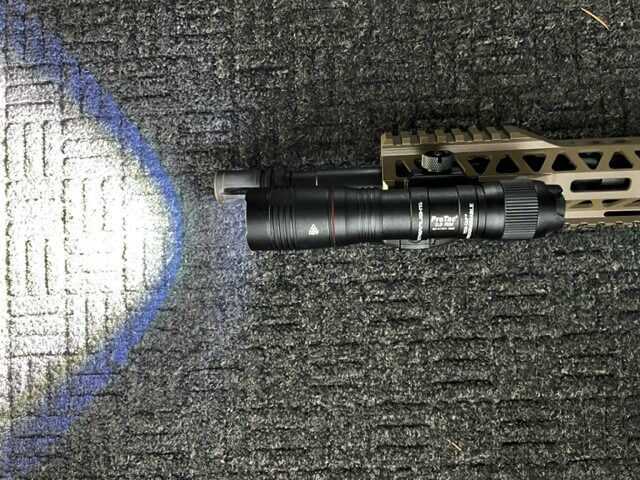
If you are using a rifle, carbine, or shotgun for home protection or any kind of social work, you need a light. Even during the day, it is always dark inside. Many people put lights on guns because everyone on the internet has one. A little thought can save you a lot of money and help keep you and your family safe.
Evildoers prefer the cover of darkness for crime. Given 30 minutes or so, human eyes can adapt to low light levels but do not quickly adjust to drastic changes in light. In a dark area, flashing a bright light in the face of an unknown person will temporarily blind them while giving you time to identify and respond.
With a flashlight, you control the light and have the advantage. More light provides better information. Better information leads to good decisions. Good decisions provide rapid decisive action. Rapid decisive action can help you prevail under difficult circumstances.
I have used weapon-mounted lights in the Army and law enforcement. I have used these lights for SWAT warrants and military raids in Afghanistan, starting with handheld lights mounted to hand guards and progressing to dedicated rifle/shotgun lights. Lights are important and add life-saving situational awareness and target identification.
With all of the options available, many people just buy the first thing that pops up on Amazon or an impulse buy at the gun store. If you are an educated consumer, there has never been a better time to buy a great light at a great price. You don’t have to spend a fortune, but make sure you don’t buy junk that will fail when you need it most.
Weapon-mounted lights let you see in the dark and keep both hands on your long gun, but do you want to muzzle everything you look at? I am not going to address tactics and legalities in this post but you need to think about them and get some training before you use a light as anything but a range toy.
Why do you need a light?
Blinding and disorienting suspected threats- Bright lights and strobes can make an attacker pause, giving you time to look, think, shoot or leave.
Navigation- Finding Your way in the dark without falling.
Search for a Threat- Turn dark into day
Identify Threat- Who is in front of your gun and are they a threat?
Engage Threat- If a deadly threat is identified, lights can get you on target and check your backdrop
Communication- You can signal other friendlies to let them know your location and intentions
So you want to put a light on your rifle, carbine, or shotgun. Before you can make a logical choice, you need to ask yourself some questions.
What is your mission? Are you a homeowner or a patrol officer? Are you protecting your family or searching for a fugitive?
What is your situation? That determines what you need to see. Are you in a high-rise apartment or on a 100-acre farm? Indoors, low-power lights can work fine; across a pasture, you need more lumens to get the candela to push the lux where you need them.
SEE MORE: Weapon Light or Flashlight? The Answer is Obvious.(Opens in a new browser tab)
How many lumens do you need?
Technology advances each year, producing brighter, lighter, and smaller lights. Manufacturers love to brag about the lumens their lights produce. More Lumens are not always better.
The limits of physics mean that a brighter light requires more energy. That energy comes from batteries. Flashlights must balance high brightness, long run times, and battery size/weight. For example:
-The Streamlight TLR-1 HPL produces 1000 lumens and reaches 490 meters. It uses two CR123 batteries for a 1.5 hour run time.
-The Streamlight TLR-1 produces 300 lumens. It uses two CR123 batteries for a 2.5 hour run time.
It can be tricky comparing lights online. If you go with a major manufacturer, you can trust their figures on flashlight performance standards. ANSI/NEMA FL-1 established definitions, testing methods, and markings for manufacturers.
Twenty years ago, SWAT teams used 100-lumen tactical flashlights to search houses. Today 100 lumens is a below-average light with a beam distance of about 15 meters. Here are some examples of what kind of performance you can expect. Where I have the manufacturer’s data, I will give you the throw of the beam distance they claim.
Maglite 3 D cell 45 lumens
Maglite 4 D cell 98 lumens
Streamlight M3X 125 lumens (30 meters)
Streamlight TLR-1 300 lumens
Streamlight TLR-RM 1 500 lumens (140 meters)
Inforce WML 400 lumens
Streamlight TLR-1 HPL 1000 lumens (490 meters)
Streamlight TLR-9 1000 limens (200 meters)
Surefire M300 Mini Scout 500 lumens (175 yards)
Surefire M600DF Ultra Scout Light 1,500 lumens (250 meters using SF18650B batteries)
Streamlight Protac 2 2000 lumens (266 meters)
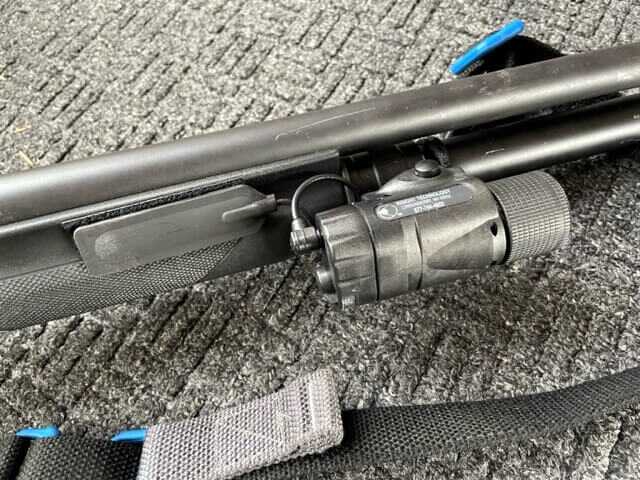
Situational Awareness or Target Identification?
All light design is a compromise between situational awareness and target identification. Flashlights are optimized for specific uses. The beam of a flashlight is the three-dimensional shape of the illuminated area. There are two basic types of beam configurations: spot and flood:
-A spot is focused into a narrow beam to maximize the reach at the sacrifice of peripheral illumination. A bright spot has great throw but leaves dark areas which lessen situational awareness.
-A flood produces a hemispheric shape with even light distribution maximizing peripheral illumination.
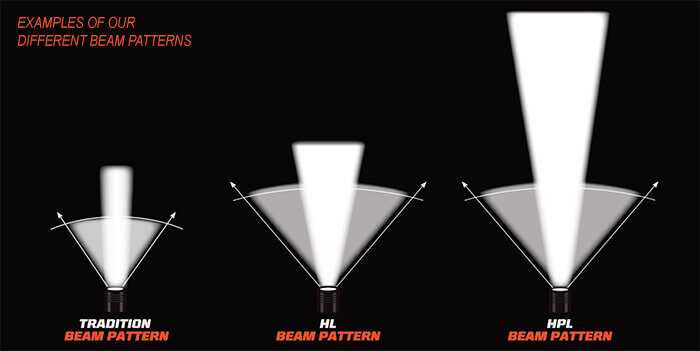
You can do a deep dive into the technology, but you really only need to understand a few simple performance terms.
-Lumens measure the total amount of light coming from a device.
-Candela is the peak beam intensity, a measure of the brightest spot in a focused beam. Candelas tell you about the throw of the light.
-The amount of light that reached a target is the Lux, which is affected by distance and angle.
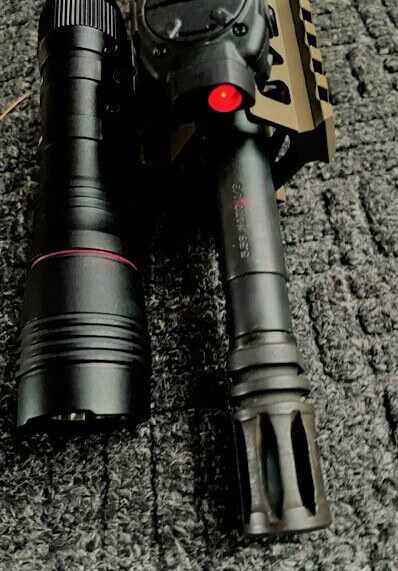
While brightness is not the most important factor in flashlight performance it is a convenient way to compare lights. If a light is not bright enough it can not be effective. The reflector’s shape and surface, along with Lumens, determines the candela or throw of the light.
Parabolic reflectors with highly mirrored surfaces focus the light into a tight, directional beam. This gives the light throw, providing the best candela. Candela defines how far away you can identify a threat.
A light might have a very high lumen count but may not have high candela and resulting lux levels. The real measure of effectiveness is how much light it puts on the target. I don’t have a bunch of pictures of light beams here because I don’t find them a useful representation of the illumination provided. Going to a night shoot or low light class is the best way to see how lights work in the real world.
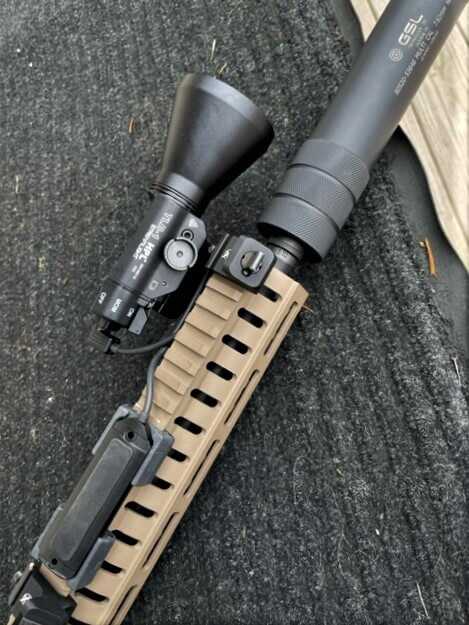
Light Selection Considerations
Price and Quality- There is a staggering variety of lights. Reputable companies like Streamlight and Surefire produce reliable data on their lights for comparison and have solid warranties. Economy lights may not perform.
I see many lights come through classes that I teach and attend. Many lights that look great fail with even moderate use. I have never heard anyone say “Man I love this Chinese gun show light. I am going to buy another one.” My agency duty lights and the lights I used in the Army were made by Streamlight and Surefire. I am not saying these are the only good brands, but based on hard use over years, I can recommend them.
Rugged – If you are going to hang a light on a rifle or a shotgun, it must be a rugged design. If a light is not specifically designed for firearms (looking at you, airsoft lights), it will break during live fire. You need to take your duty/home defense lights to the range. If the store where you purchased your light also sells malt liquor, it is probably not a rugged light. If the website where you bought the mount also carries airsoft guns, it may not hold up.
Size and Weight – Large flashlights are powerful, but adding weight and bulk to the front of a long gun makes handling slower and can be a challenge to carry for long periods of time. A small light flashlight is easier to maneuver.
Waterproof – Life sometimes happens in the rain. Consider your environment.
Power source – Most weapon lights use disposable batteries. Commonly available CR123 and AA are used in many devices to simplify logistics. There are some high-performance, rechargeable lights out there, but you need a reliable power source and time to charge them. Lights that can accept both disposable and rechargeable power sources provide options.
Consider the run time and storage life requirements of your application. If you are going to frequently use a light, you should consider the cost of batteries over the life of the light. Rechargeable could save hundreds of dollars.
Batteries can be dangerous. Off-brand imported batteries have started fires and even the best batteries can corrode inside devices. You shouldn’t use lithium or lithium-ion batteries unless recommended by the manufacturer.
Mixing used and new batteries or different brand batteries may cause leakage, fire, explosion, and serious personal injury. I like to remove batteries when not in use. In duty or ready guns, you need to check batteries routinely.
Streamlight recommends the use of Panasonic, Sanyo, Duracell, or Energizer batteries. Streamlight and Surefire have their own battery lines also. These are good recommendations for all lights; high-quality batteries are a must for all lights.
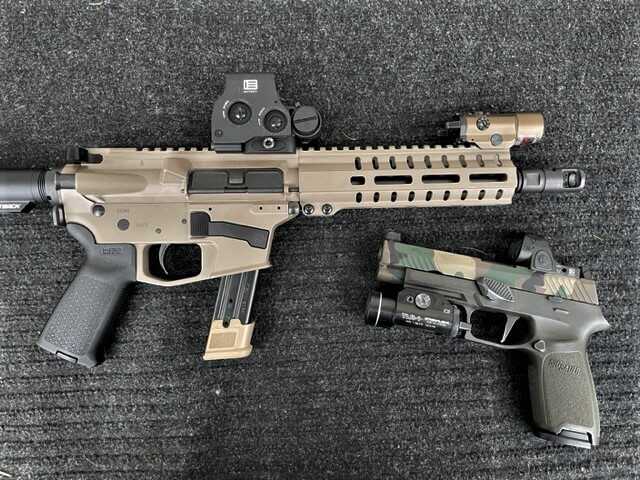
Types of Lights
Your best choice is a dedicated weapon-mounted light from an American company. Buy the best quality you can afford, these lights have to endure recoil forces and rough handling. If cost is a major factor, older models are available on the used market on forums like AR15.com and tacswap.com.
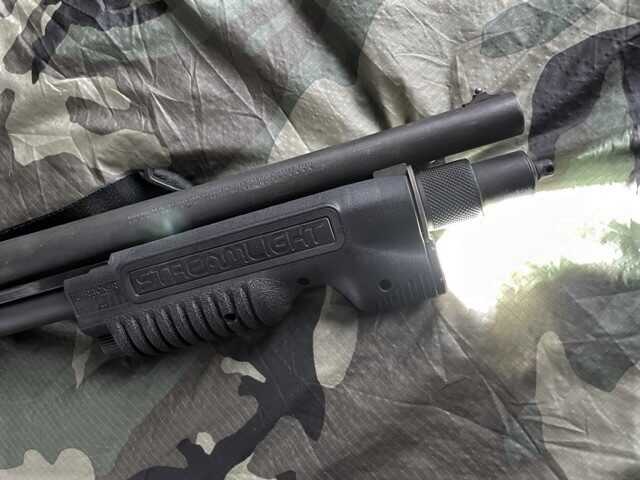
The most powerful lights available today are side-mounted lights. They can be big without blocking sights and operated with tail cap switches or remote switches. However, shooting around cover can be awkward with these mounts.
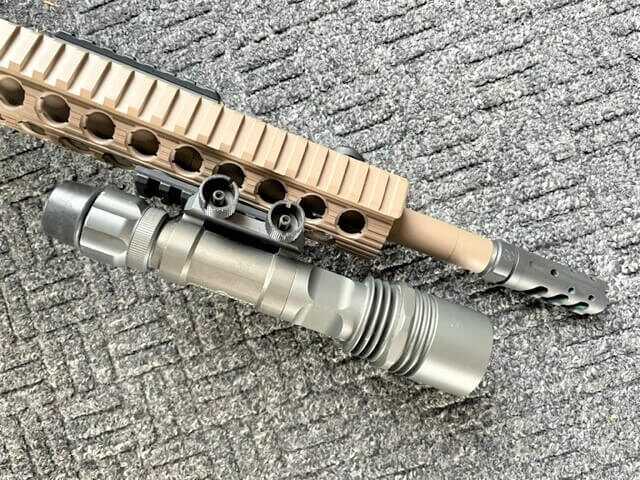
Light Placement
Guns with short barrels have short handguards which reduces real estate for hands, lights, and switches. You may not have many options on a small carbine. I prefer the longest rail I can get. When using a suppressor, I prefer a handguard that extends over the suppressor for better grip and light placement.
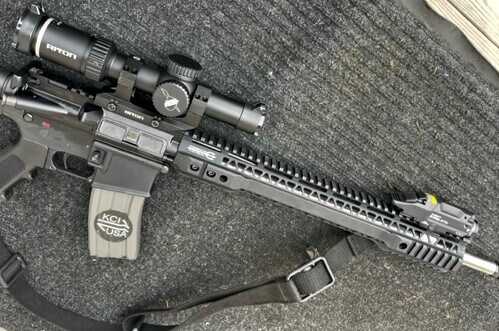
Lights should be mounted as far forward as possible to reduce barrel/suppressor shadow. While lights can be mounted at any position around the barrel, optimum light placement is at the 12 o’clock position so the light has the least obstruction.

Lights can be mounted on the rail, barrel, or front sight post. Barrel mounts get hot and can affect accuracy. If lights get too close to the flash hider, carbon will quickly cover the lens. Back-up sights can be shifted rearward or placed on a 45-degree angle to make room.
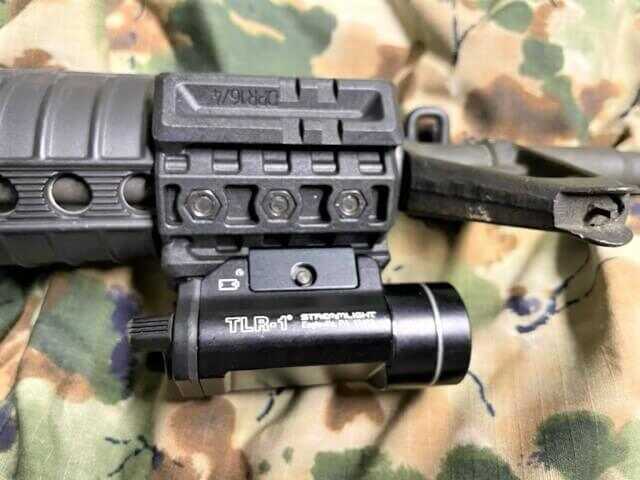
Ideally, the light and switch placement should be built around the shooting grip. The support hand should be able to activate the light without compromising the support hand grip. Daytime grip and nighttime grips should be the same.
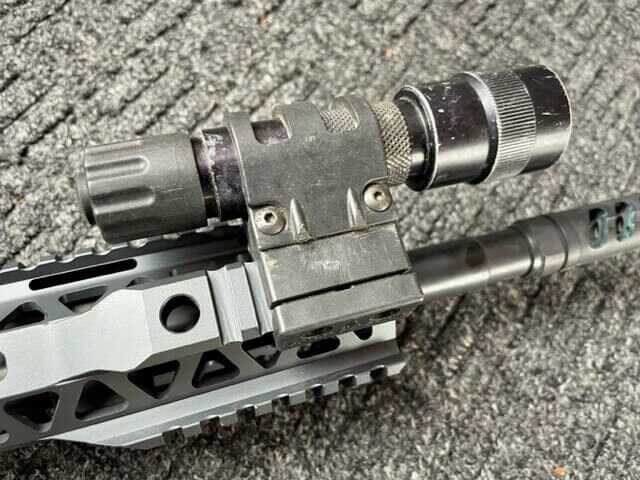
You may consider mounting two lights on the rifle. A smaller light can serve as a backup or navigation light. IR illuminators and lasers are needed for night vision applications.
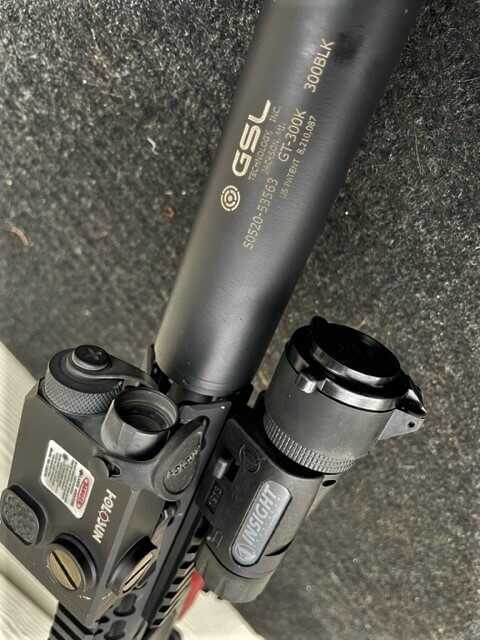
Controls
The location of your hand in a good shooting position should determine the location of your switch. Ideally, you have one shooting grip, day or night and your switches do not require you to relocate your hands. There are many options but your budget or agency restrictions may not allow an optimal solution.
Common control options are tail cap buttons, rocker switches, and pressure pads. These may feature momentary and constant “on” settings. Some lights feature strobe functions. The important thing here is that you get what you want from your light when you want it. Unintended activations or strobing are not acceptable.
I like tail cap switches that sit just in front of my thumb between 9 o’clock and 3 o’clock. This avoids cables that can snag or break. It is clean and simple. The first remote switches I used were fragile and prone to failure, so I tried to avoid them.
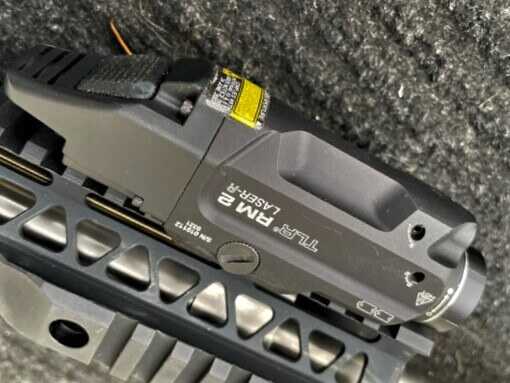
Remote switches are more reliable and good cable management can avoid snags. A better grip solution is a remote switch mounted at the 12 o’clock position on the handguard. Using a C-clamp grip, the thumb of either hand can manipulate it. The difficulty here is that the 12 o’clock space is also needed for sights and lights.
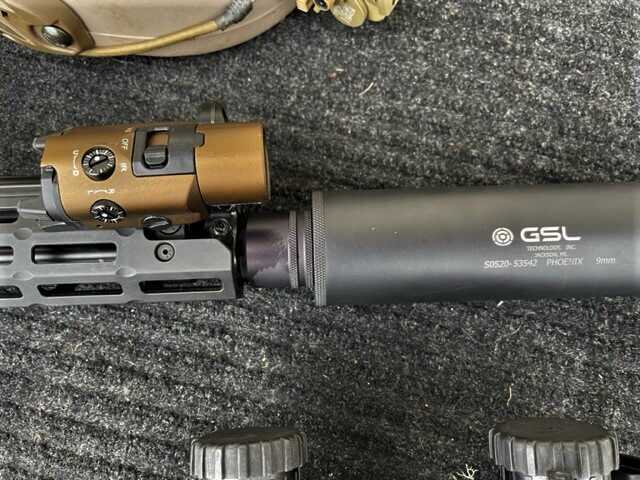
IR illuminator/IR laser for 12 hours. An easy-to-use switch lets you choose day, night, or cut-off power.
Lights in gun cases have a tendency to activate burning out bulbs and batteries. Some lights get hot enough to start a fire. A lockout switch can prevent this.

IR illuminator and IR aiming laser. Mounting options on the MP-5 are limited even with the Midwest rail. The Aimpoint Comp M and 300 lumen white light on the TL-VIR provide visible targeting. The GSL Phoenix suppressor makes the whole system a bit more civilized.
There has never been a time when weapon-mounted lights have been more flexible or more useful. There is a great mix of mounts and lights that can provide an ideal solution for your application. Do your homework and look at the other guns at the range and come up with your best solution. Bad things come when you stay in the dark.
*** Buy and Sell on GunsAmerica! ***



Excellent and comprehensive article, Mark.
Thanks John. There is so much information to cover on this topic. I tried to make it comprehensible.
I prefer Inforce.
I like the way the Inforce switch is built into the light. It fits well into certain builds. Their WMLx White – Gen 2 puts out 800 lumens with up to 2 hours output from two lithium batteries. Not to bad.
Love the cropped photo of the Banshee!
“What pistol brace?!?”
Just another law abiding citizen.